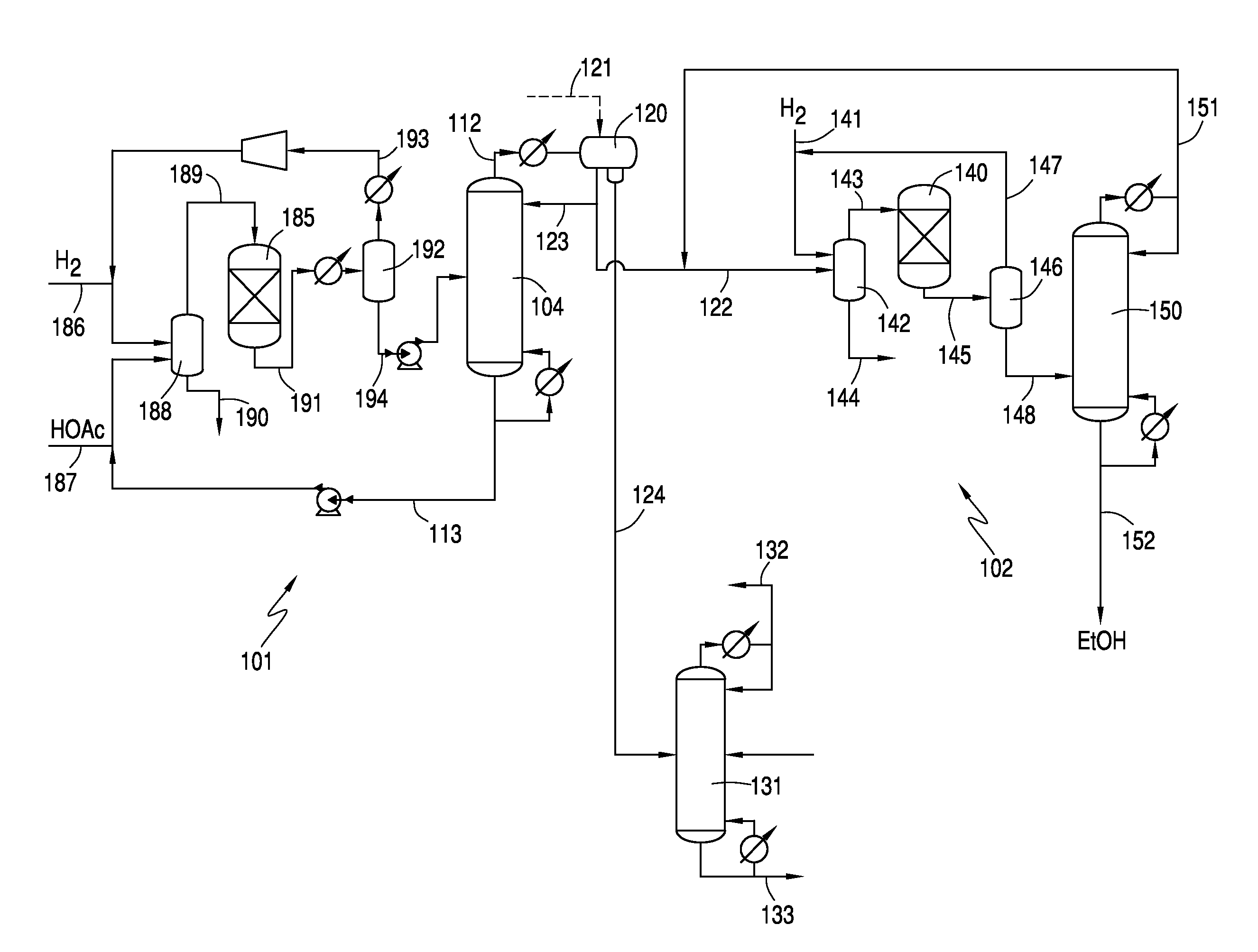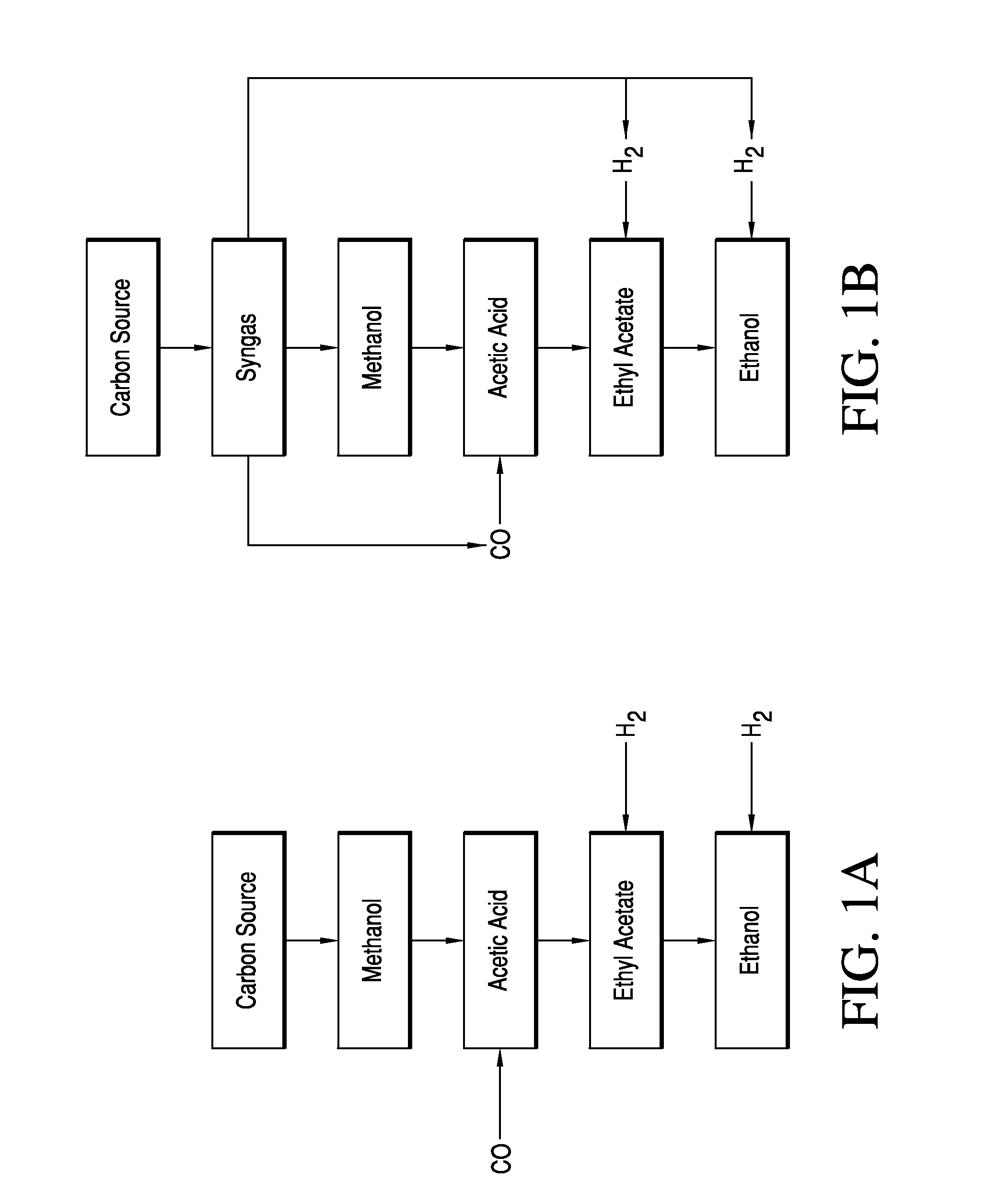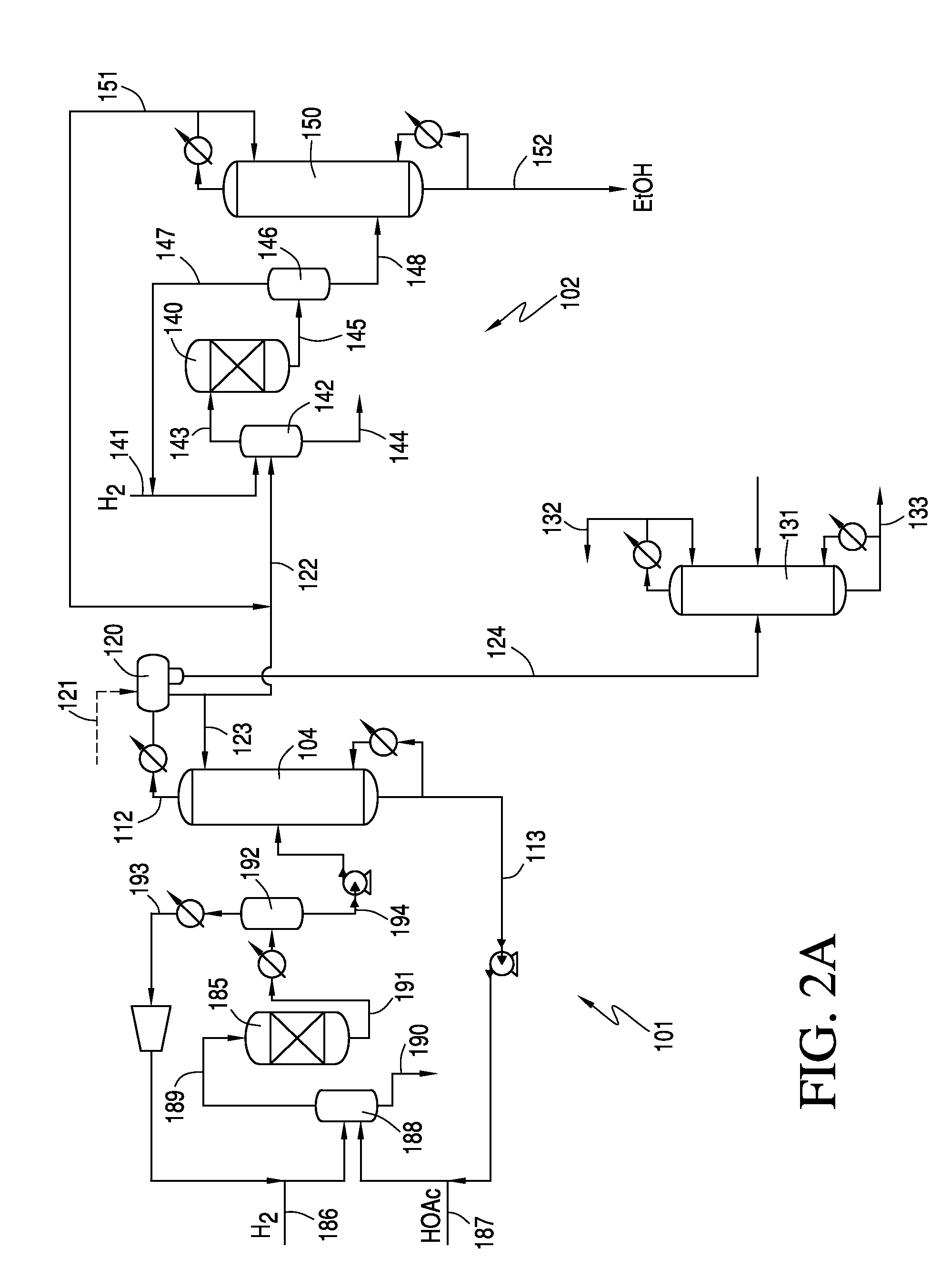Hydrogenating Acetic Acid to Produce Ethyl Acetate and Reducing Ethyl Acetate to Ethanol
a technology of ethyl acetate and acetic acid, which is applied in the field of reducing ethyl acetate to ethanol, can solve the problems that none of the ethanol formed by reducing the ester feed stream is recycled to the first reactor, and achieves the effect of reducing the amount of diethyl acetal
- Summary
- Abstract
- Description
- Claims
- Application Information
AI Technical Summary
Benefits of technology
Problems solved by technology
Method used
Image
Examples
example a
Preparation of 1 Weight Percent Platinum and 5 Weight Percent Copper on High Purity Low Surface Area Silica
[0223]Powdered and meshed high purity low surface area silica (94 g) of uniform particle size distribution of about 0.2 mm was dried at 120° C. in an oven under nitrogen atmosphere overnight and then cooled to room temperature. To this was added a solution of platinum nitrate (Chempur) (1.64 g) in distilled water (16 ml). The resulting slurry was dried in an oven gradually heated to 110° C. (>2 hours, 10° C. / min). The impregnated catalyst mixture was then calcined at 500° C. (6 hours, 1° C. / min). To this calcined and cooled material was added a solution of copper nitrate trihydrate (Alfa Aesar) (19 g) in distilled water (19 ml). The resulting slurry was dried in an oven gradually heated to 110° C. (>2 hours, 10° C. / min). The impregnated catalyst mixture was then calcined at 500° C. (6 hours, 1° C. / min).
example b
Preparation of 1 Weight Percent Palladium and 5 Weight Percent Cobalt on High Purity Low Surface Area Silica
[0224]Powdered and meshed high purity low surface area silica (94 g) of uniform particle size distribution of about 0.2 mm was dried at 120° C. in an oven under nitrogen atmosphere overnight and then cooled to room temperature. To this was added a solution of palladium nitrate (Heraeus) (2.17 g) in distilled water (22 ml). The resulting slurry was dried in an oven gradually heated to 110° C. (>2 hours, 10° C. / min). The impregnated catalyst mixture was then calcined at 500° C. (6 hours, 1° C. / min). To this calcined and cooled material was added a solution of cobalt nitrate hexahydrate (24.7 g) in distilled water (25 ml). The resulting slurry was dried in an oven gradually heated to 110° C. (>2 hours, 10° C. / min). The impregnated catalyst mixture was then calcined at 500° C. (6 hours, 1° C. / min).
example c
[0225]Preparation of 1 weight percent palladium and 5 weight percent cobalt on H-ZSM-5. The procedures of Example B were substantially repeated except for utilizing H-ZSM-5 as the catalyst support.
PUM
| Property | Measurement | Unit |
|---|---|---|
| Temperature | aaaaa | aaaaa |
| Temperature | aaaaa | aaaaa |
| Fraction | aaaaa | aaaaa |
Abstract
Description
Claims
Application Information
 Login to View More
Login to View More - R&D
- Intellectual Property
- Life Sciences
- Materials
- Tech Scout
- Unparalleled Data Quality
- Higher Quality Content
- 60% Fewer Hallucinations
Browse by: Latest US Patents, China's latest patents, Technical Efficacy Thesaurus, Application Domain, Technology Topic, Popular Technical Reports.
© 2025 PatSnap. All rights reserved.Legal|Privacy policy|Modern Slavery Act Transparency Statement|Sitemap|About US| Contact US: help@patsnap.com



